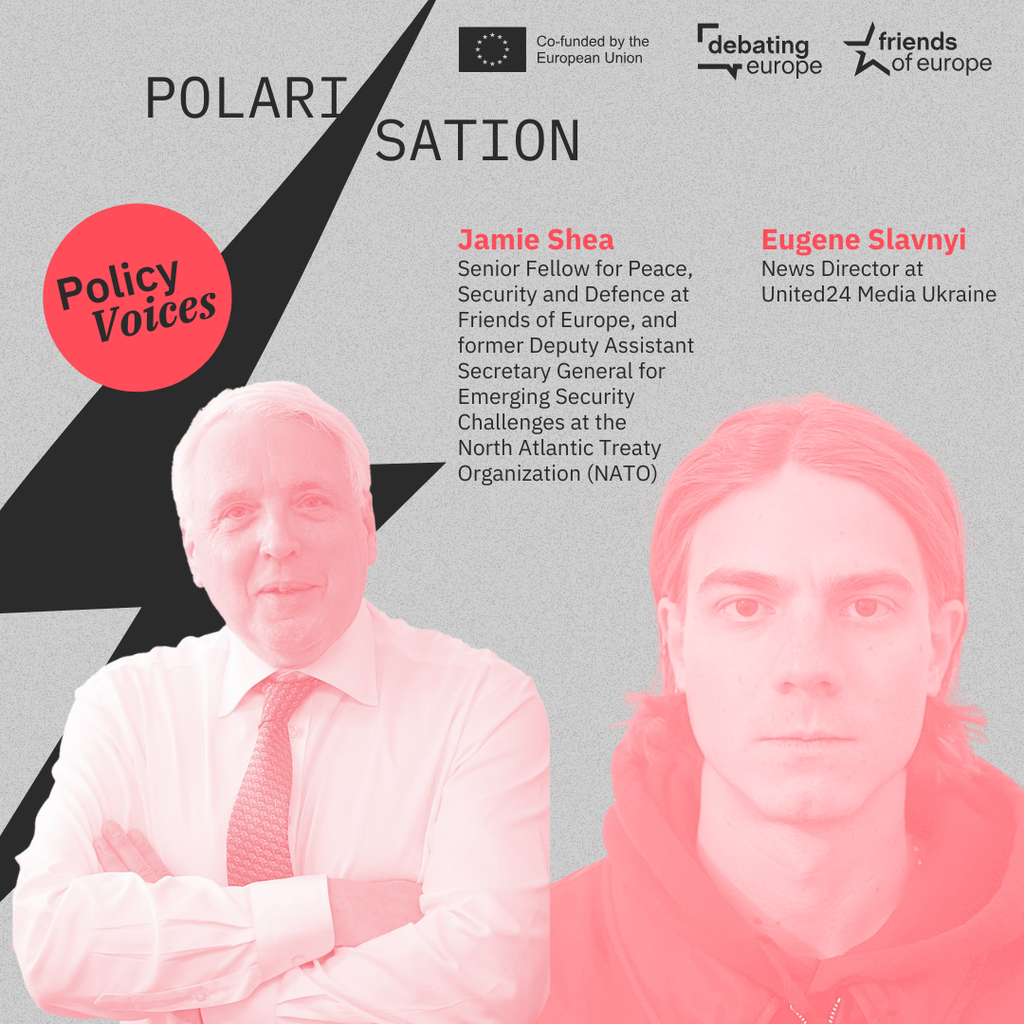From ambition to action: building Europe’s Defence Union
Past event In person

- Area of Expertise
- Peace, Security & Defence
Peace, Security & Defence

Consultant on Emergency Preparedness and Response to CBRN (chemical, biological, radiological and nuclear) threats
The potential scale of destruction from chemical, biological, radiological and nuclear (CBRN) attacks is significantly higher than that of conventional weapons. Countries are not used dealing with these types of threats. Medical infrastructure could quickly be overwhelmed, and countermeasures need to be sourced and administered quickly to be effective.
The threat posed by the weaponisation of the most lethal viruses has long been contained by obstacles to access. Virus samples such as smallpox are held under tight security and specialist lbs would be required to handle them. However, with the advent of synthetic biology, relying on secure containment of dangerous pathogens to reduce the bioterror risk may no longer prove an effective barrier to their use in malicious attacks. This technology provides the capability to synthesise pathogenic viruses from scratch without the need to obtain them from a secure facility or have access to specialist labs and facilities to manufacture them. This concern stems from a group of Canadian researchers who recreated a horsepox virus (related to smallpox virus) using synthetic biology techniques in 2016 and published the methodology.
These techniques could also be used to manipulate pathogenic bacteria and viruses to alter their virulence properties. They might even be made more resistant to antibiotics and anti-virals that are used as the first line of defence.
The appropriateness of the stockpile is reviewed annually
However, there are ways to prepare for this where there are medical countermeasures such as vaccines and therapeutics available. Because these products cannot be manufactured at short notice the only effective solution is to establish stockpiles of these countermeasures that can be distributed within hours and days after an attack. Take the United States, for example. It has established the Strategic National Stockpile (SNS) which contains about $7bn worth of medicines and medical supplies aimed at providing a swift response to a CBRN incident. The SNS currently contains medicines and medical supplies including antibiotics, chemical antidotes, immunotherapies, vaccines and anti-viral drugs. The appropriateness of the stockpile is reviewed annually in order to make recommendations for changes based on current scientific evidence about future procurements.
The stockpile is organised for a flexible, rapid response and is structured in several categories. First is managed inventory, which provides for maintaining a supply of medications at strategically placed locations for specific health threats. This allows the Department of Human Health Services (HHS) and the Centre for Disease Control (CDC) to respond with the right product when a specific disease agent is known. These products can be expected to arrive within 24-36 hours of a federal deployment decision.
There is also the 12-hour ‘push package’. If a community experiences a large-scale health incident in which the disease agent is initially unknown, the first line of support is to send 12-hour ‘push packages’ which contain a broad range of pharmaceuticals and medical supplies to combat any number of health threats.
American agencies have deployable personnel
The stockpile also includes so-called CHEMPACKs, containers of nerve agents placed in secure locations around the country to allow rapid response to a chemical incident.
Meanwhile, federal medical stations seek to increase local health care capabilities by providing a rapidly deployable reserve of different equipment in order to care for up to 250 people. This can operate for three days before resupply is needed.
Finally, American agencies have deployable personnel. The SNS Department has staff that can deploy with the shipments of product and provide expertise to local authorities on receiving, distributing and dispensing protective medical materials.
Should a large-scale biological event occur, both the EU and NATO will have to work hand in hand
Could the American example also be applied to the European Union? In the EU, a similar stockpiling strategy would rely more on the willingness of Member States to cooperate on policy, legislation and implementation and on the openness to give a coordinating role to the European Commission. That said, the SNS in the US does provide an example of what can be achieved on a continent-wide basis with the right commitment and structures. The need for the establishment of EU managed stockpiles has been highlighted recently with the COVID 19 emergency. Although there are no vaccines or antivirals available for this virus, there have been issues where Member States have not been willing to share protective equipment with other Member States as they are rightly looking to protect their own citizens first.
NATO has been more explicit in highlighting the urgent need to prepare against biological threats. Last year, NATO’s Civil Emergency Planning Committee and its Joint Health, Agriculture and Food Group (JHAFG) published non-binding policy recommendations for a Robust Security of Supply and Supply Chain Arrangements for Medical Countermeasures. This guidance document provides a specific focus on biological countermeasures, as these are products that would typically take more time to be manufactured and delivered on time in case of an emergency health crisis.
In parallel, NATO’s Civil Emergency Planning Committee (CEPC) also published non-binding guidelines for enhanced civil-military cooperation to deal with the consequences of large-scale CBRN events associated with terrorist attacks. Such non-binding guidelines also include a call for close(r) cooperation with civilian authorities.
In the end, should a large-scale biological event occur, both the EU and NATO will have to work hand in hand and share expertise, capacities and personnel. A closer cooperation and regular coordination will be needed to efficiently activate this partnership in times of crisis.
Past event In person

Next event

Past event Online

Past event Online





Stay informed
We use cookies and similar technologies to adjust your preferences, analyze traffic and measure the effectiveness of our campaigns. Learn more about our privacy policy.